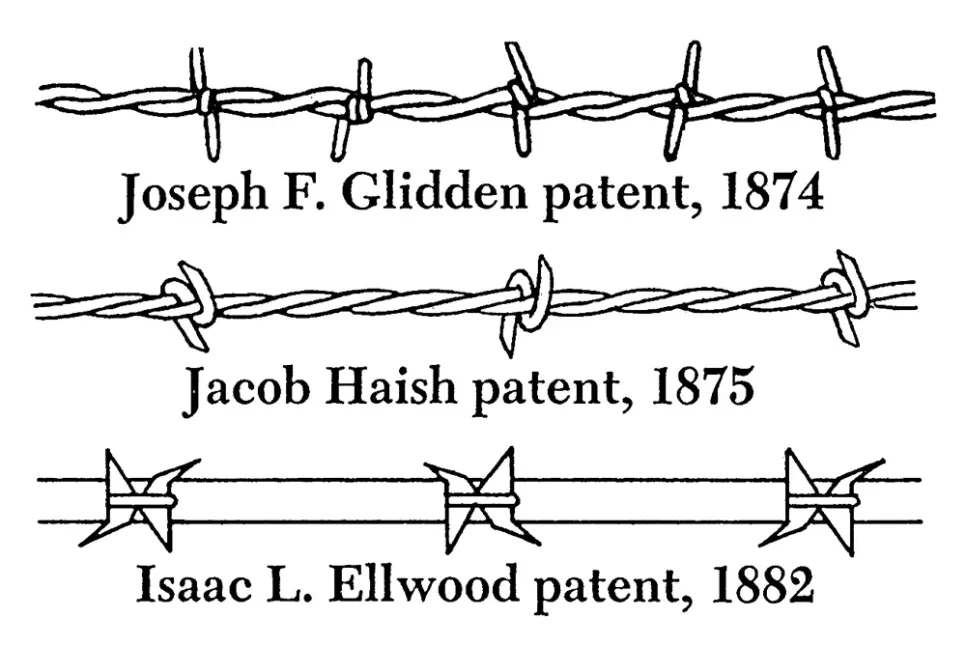
Few people know, but initially barbed wire was not quite barbed wire, as it is now. The forefathers of modern barbed wire include a wire fence for livestock, which was built in 1873 by an ordinary American farmer Henry Rose from Illinois. But, as it turned out, the farmer was not a typical simpleton from the American suburbs, and in the same 1873 he patented his invention. When the wire fence was demonstrated at an agricultural exhibition in the town of DeKalb, it was approved by many visitors, but only three of them - Jacob Haish, Isaac Ellwood and Joseph F. Glidden saw prospects for further structural improvement of this invention. Already in February of the following year, one of the inventors, Isaac Ellwood, patented a new type of barbed wire, which could not compete with the version of barbed wire from Joseph F. Glidden.
Glidden took a completely different approach to solving the problems of wire efficiency, giving it spikes placed along the entire length at regular intervals. The spikes were made using a coffee grinder. The spikes were tightly wrapped around the wire, which allowed them to remain in place under any circumstances of external mechanical influence. The spikes were also wrapped with another wire, which ensured reliable fixation. However, Glidden can be called more of a successful businessman than an innovator, because his barbed wire egoza.ua was also based on the earlier developments of 1865 by the Frenchman Louis Giannin.
In July 1874, Glidden's friend and associate Issac Ellwood bought half of the patent rights from the inventor, and together they founded the I.L. Ellwood Manufacturing Company." Having started production in the backyard of I. Ellwood's hardware store, the partners were able to rapidly expand the capacity of the joint venture. During the twenty years of barbed wire production, between 1875 and 1900, annual production increased from 270 to 150,000 tons.
According to the generally accepted version, the first inventor of barbed wire is the American Joseph F. Glidden, who also managed to organize its production and sale on an industrial scale. Glidden barbed wire is still used today, but over time it began to be replaced by a more effective barbed wire with aggressive blades - this is reinforced barbed tape called Egoza or Concertina Razor Wire, the design of which is similar.